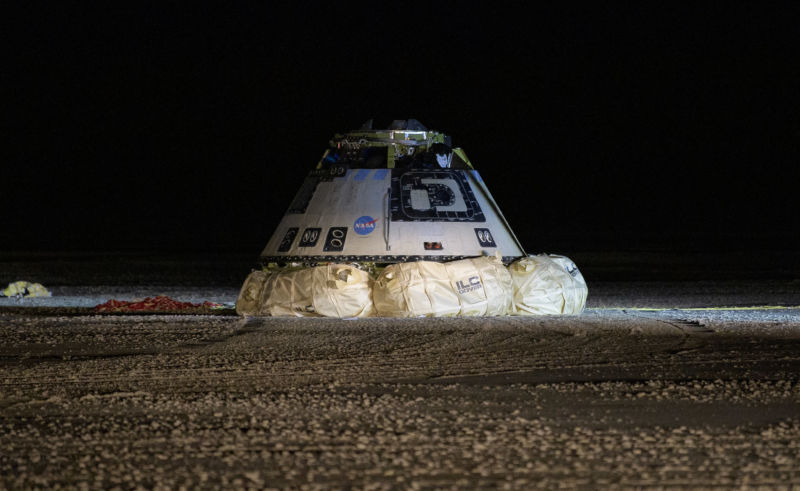New document reveals significant fall from grace for Boeing’s space program

Enlarge / The Boeing CST-100 Starliner spacecraft is seen after it landed in White Sands, New Mexico, Sunday, Dec. 22, 2019. (credit: NASA/Bill Ingalls)
Much has been made of Boeing's difficulties in aviation, most notably with the 737 Max. This airplane has been grounded for a year after two crashes that killed 346 people between them, collectively making for the worst air disaster since September 11, 2001.
Then there are the issues with the company's KC-46 Pegasus tanker program, which is $3 billion over budget, three years behind schedule, and beset by technical issues. Most recently, in March, the Air Force revealed that it had upgraded chronic leaks in the aircraft's fuel system to a Category I deficiency. This is a problem for an aircraft that is supposed to perform aerial refueling.
Since December, the company's space issues have also become more widely known following the failure of the company's Starliner capsule to successfully carry out a test flight to the International Space Station. NASA labelled this aborted mission, during which the spacecraft was nearly lost two times, a "high visibility close call." The company has agreed to perform a second test flight without crew to assure NASA of Starliner's safety.
Read 8 remaining paragraphs | Comments